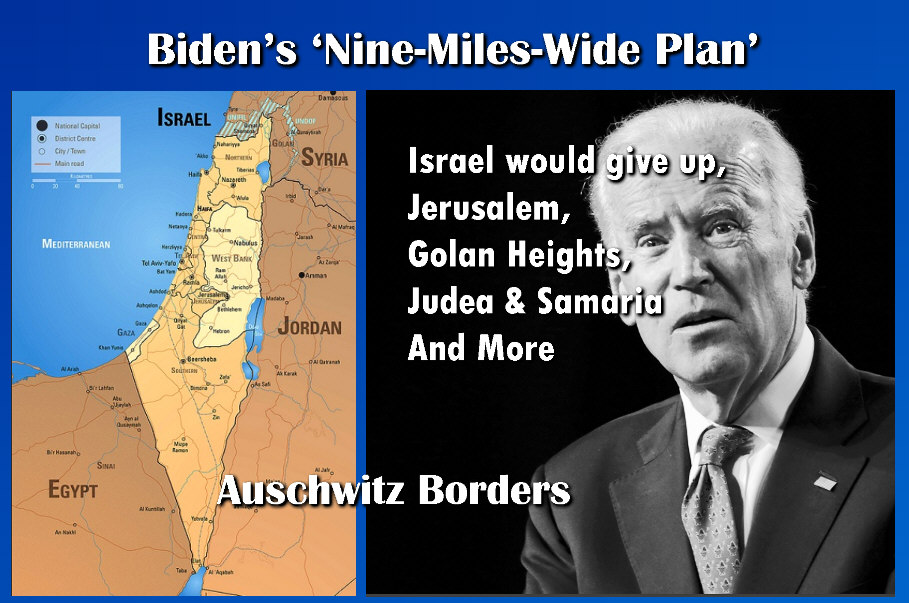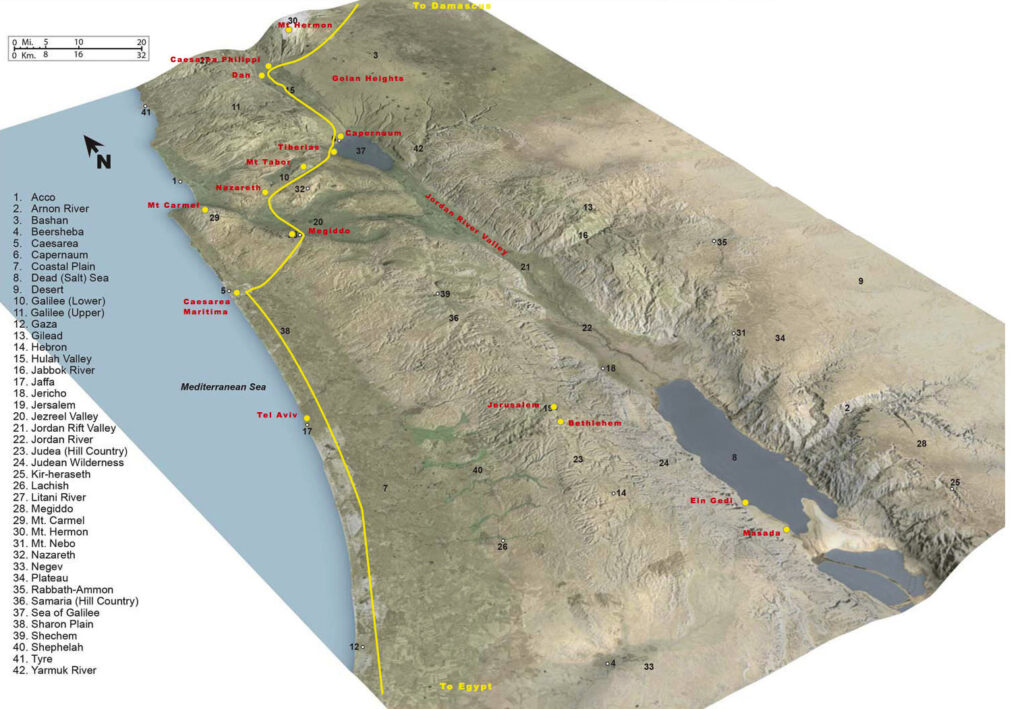
The National received a draft policy paper regarding Palestinian affairs of the Biden State Department, written by Deputy Assistant Secretary of State for Israeli-Palestinian Affairs, Hady Amr. Amr has a longstanding history of pro-Islamist positions, as well as advocating for the inclusion of Hamas in the peace process. Prior to this position, he was part of Obama’s negotiating team, and before that, the founding director of the Doha center of the Brookings Institution, which is funded in part by the Qatar government, the main patron of Hamas.
Drafted by Deputy Assistant Secretary for Israeli and Palestinian Affairs Hady Amr, the memo also details plans to roll back various Trump policies that Washington believes made reaching a two-state solution more difficult, such as US legitimization of the settlement enterprise.
The memo notes the Biden administration’s commitment to engaging the international community via the UN and the Middle East Quartet, which consists of the United Nations, United States, European Union and Russia.
What will keep the peace between Israel and the Palestinians is not a “two-solution” based on a treaty. The Palestinians take as their model of treaty-making the Hudaibiyya Agreement that Muhammad made with the Meccans in 628 A.D. That “truce” was to have lasted 10 years, but after only 18 months, realizing his army had grown stronger, Muhammad violated the treaty and attacked the Meccans. This has been the model of all subsequent treaty-making by Muslims with Infidels. What will keep the peace between Israel and its Arab neighbors is what kept the peace between the West and the Soviet Union during the Cold War – the strategy of deterrence. As long as Israel remains, and is seen to be, militarily much stronger than its potential enemies, the Jewish state will be able to keep the peace.
Stephen M. Flatow JNS Biden’s ‘Nine-Miles-Wide Plan’ “The plan is, put simply, the “Nine-Miles Wide Plan.” It has to be. Because any Palestinian state has to include the third-largest P.A. city, Tulkarm, and the fifth-largest P.A. city, Qalqilya. The P.A. is not going to make those cities part of Israel. So, they will be part of “Palestine.” Tulkarm and Qalqilya are nine miles from the Mediterranean Sea. Israel won’t even be as wide as Washington, D.C.—or the Bronx, N.Y.”
The United States has historically backed Israel’s view that UN Security Council Resolution 242, adopted in the wake of the Six-Day War on November 22, 1967, does not require a full withdrawal to the 1949 armistice lines (sometimes loosely called the 1967 borders). Moreover, in addition to that interpretation, both Democratic and Republican administrations have argued that Israel was entitled to “defensible borders.
It is important to recall that Resolution 242 was a joint product of both the British ambassador to the UN, Lord Caradon, and the U.S. ambassador to the UN, Arthur Goldberg.
The meaning of Resolution 242 was absolutely clear to those who were involved in this drafting process. Thus, Joseph P. Sisco, who would serve as the U.S. Assistant Secretary of State for Near Eastern and South Asian Affairs, commented on Resolution 242 during a Meet the Press interview some years later: “I was engaged in the negotiation for months of that resolution. That resolution did not say ‘total withdrawal.’”2 This position was fully coordinated with the British at the time. Indeed, George Brown, who had served as British foreign secretary in 1967 during Prime Minister Harold Wilson’s Labour government, summarized Resolution 242 as follows: “The proposal said, ‘Israel will withdraw from territories that were occupied,’ not ‘from the territories,’ which means Israel will not withdraw from all the territories.”
President Johnson: ‘67 Line a Prescription for Renewed Hostilities
President Johnson’s insistence on the territorial flexibility of Resolution 242 could be traced to statements he made on June 19, 1967, in the immediate wake of the Six-Day War. Johnson declared that “an immediate return to the situation as it was on June 4,” before the outbreak of hostilities, was “not a prescription for peace, but for renewed hostilities.” He stated that the old “truce lines” had been “fragile and violated.” What was needed, in Johnson’s view, were “recognized boundaries” that would provide “security against terror, destruction and war.”4

‘Auschwitz Borders’
Biden and his allies will demand Jerusalem , to accept the 1967 armistice lines, better known to informed Mideast observers as the “Auschwitz Lines,”.
To invoke the words of Abba Eban, one of Israel’s leading doves, who as foreign minister said the following at the United Nations just two years after the Six Day War: We have openly said that the map will never again be the same as on June 4, 1967. For us, this is a matter of security and of principles. The June map is for us equivalent to insecurity and danger. I do not exaggerate when I say that it has for us something of a memory of Auschwitz. We shudder when we think of what would have awaited us in the circumstances of June, 1967, if we had been defeated; with Syrians on the mountain and we in the valley, with the Jordanian army in sight of the sea, with the Egyptians who hold our throat in their hands in Gaza. This is a situation which will never be repeated in history.
Eban, perhaps one of Israel’s most articulate and astute politicians, adroitly described the fragility of Israel’s 1949-1967 map as the “Auschwitz” lines. Not a fan of Eban? Just one month before his assassination, Prime Minister Yitzhak Rabin, a Labour leader, said, “The borders of the State of Israel, during the permanent solution, will be beyond the lines which existed before the Six-Day War. We will not return to the 4 June 1967 lines.”

We have openly said that the map will never again be the same as on June 4, 1967. For us, this is a matter of security and of principles. The June map is for us equivalent to insecurity and danger. I do not exaggerate when I say that it has for us something of a memory of Auschwitz. We shudder when we think of what would have awaited us in the circumstances of June, 1967, if we had been defeated; with Syrians on the mountain and we in the valley, with the Jordanian army in sight of the sea, with the Egyptians who hold our throat in their hands in Gaza. This is a situation which will never be repeated in history.
Eban, perhaps one of Israel’s most articulate and astute politicians, adroitly described the fragility of Israel’s 1949-1967 map as the “Auschwitz” lines. Not a fan of Eban? Just one month before his assassination, Prime Minister Yitzhak Rabin, a Labour leader, said, “The borders of the State of Israel, during the permanent solution, will be beyond the lines which existed before the Six-Day War. We will not return to the 4 June 1967 lines.”
UN Security Council Resolution 242 authorizes Israel to remain in possession of all the land until it has “secure and recognized boundaries.” Or, in laymen’s terms, if giving land away is a threat to your existence, you shouldn’t give it up. Curiously, were Israel to withdraw to the pre-1967 lines reducing Israel to a nine mile wide diameter (with no buffer) this would not elicit international opprobrium, instead, an international consensus is galvanized.
Israel cannot survive and defend its territory unless it controls the Jordan Valley, a matter surely to be raised by Israeli officials in discussions with Prime Minister Stephen Harper in Jerusalem. Though the root of this conflict isn’t territorial, it’s existential in nature due to the Palestinians’ continued rejectionist dictum of adopting the notorious Khartoum Resolution of 1967: no peace with Israel, no negotiations with Israel and no recognition of Israel; that does not negate the need for Israel to have iron-clad security guarantees and incomparable defensive postures.

As is axiomatic of Israel’s military doctrine, Israel must be the final arbiter of its own destiny. Not only can Israel’s national security not be outsourced, but it must be its own guarantor of its own security. That is why Israel cannot acquiesce to the reckless abandon of adopting the vulnerable pre-war armistice/Auschwitz lines.
Short Video Israel’s Critical Security Needs for a Viable Peace
President Reagan: I Can’t Ask Israel to Return to the Pre-1967 Borders
It was the administration of President Ronald Reagan that most forcefully articulated Israel’s right to defensible borders, just after President Jimmy Carter appeared to give only lukewarm support for the U.S.-Israel understandings of the Ford-Kissinger era. Reagan himself stated in a September 1, 1982, address that became known as the “Reagan Plan”: “In the pre-1967 borders, Israel was barely ten miles wide at its narrowest point. The bulk of Israel’s population lived within artillery range of hostile armies. I am not about to ask Israel to live that way again.” Reagan came up with a flexible formula for Israeli withdrawal: “The extent to which Israel should be asked to give up territory will be heavily affected by the extent of the peace and normalization.” Secretary of State George Shultz was even more explicit about what this meant during a September 1988 address: “Israel will never negotiate from or return to the 1967 borders.”
President Bush: It is Unrealistic to Expect a Return to the Armistice Lines of 1949
The best proof that the U.S. had readopted its traditional policy that Israel was entitled to defensible borders came from the letter of assurances written by President Bush to Prime Minister Sharon on April 14, 2004, after Sharon’s presentation in Washington of Israel’s disengagement plan from the Gaza Strip. Bush wrote: “The United States reiterates its steadfast commitment to Israel’s security, including secure and defensible borders, and to preserve and strengthen Israel’s capability to deter and defend itself, by itself, against any threat or possible combination of threats.”15 Here, then, was an implicit link suggested between the letter’s reference to defensible borders and Israel’s self-defense capabilities, by virtue of the fact that they were coupled together in the very same sentence.
President Trump Borders “Jerusalem will remain the sovereign capital of the State of Israel, and it should remain an undivided city. The plan says that Israel is not legally bound to provide the Palestinians with 100 percent of pre-1967 territory, a departure from previous plans with called for near 1-to-1 land swaps. The Jordan Valley, which is critical for Israel’s national security, will be under Israeli sovereignty.
Israel will benefit from having secure and recognized borders. It will not have to uproot any settlements, and will incorporate the vast majority of Israeli settlements into contiguous Israeli territory. Fifteen Israeli enclaves — currently isolated settlements deep in the West Bank — located inside contiguous Palestinian territory will become part of the State of Israel and be connected to it through an effective transportation system.



